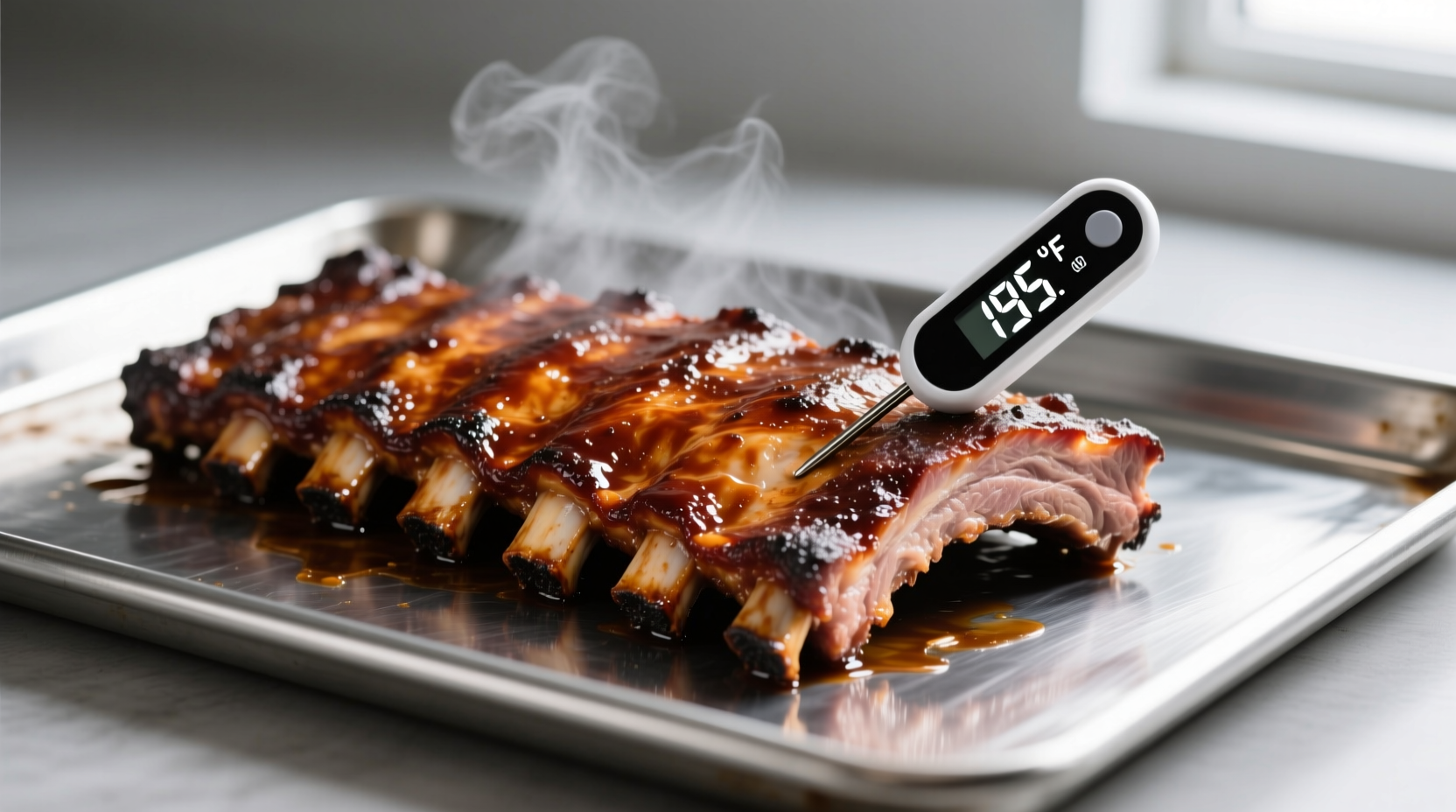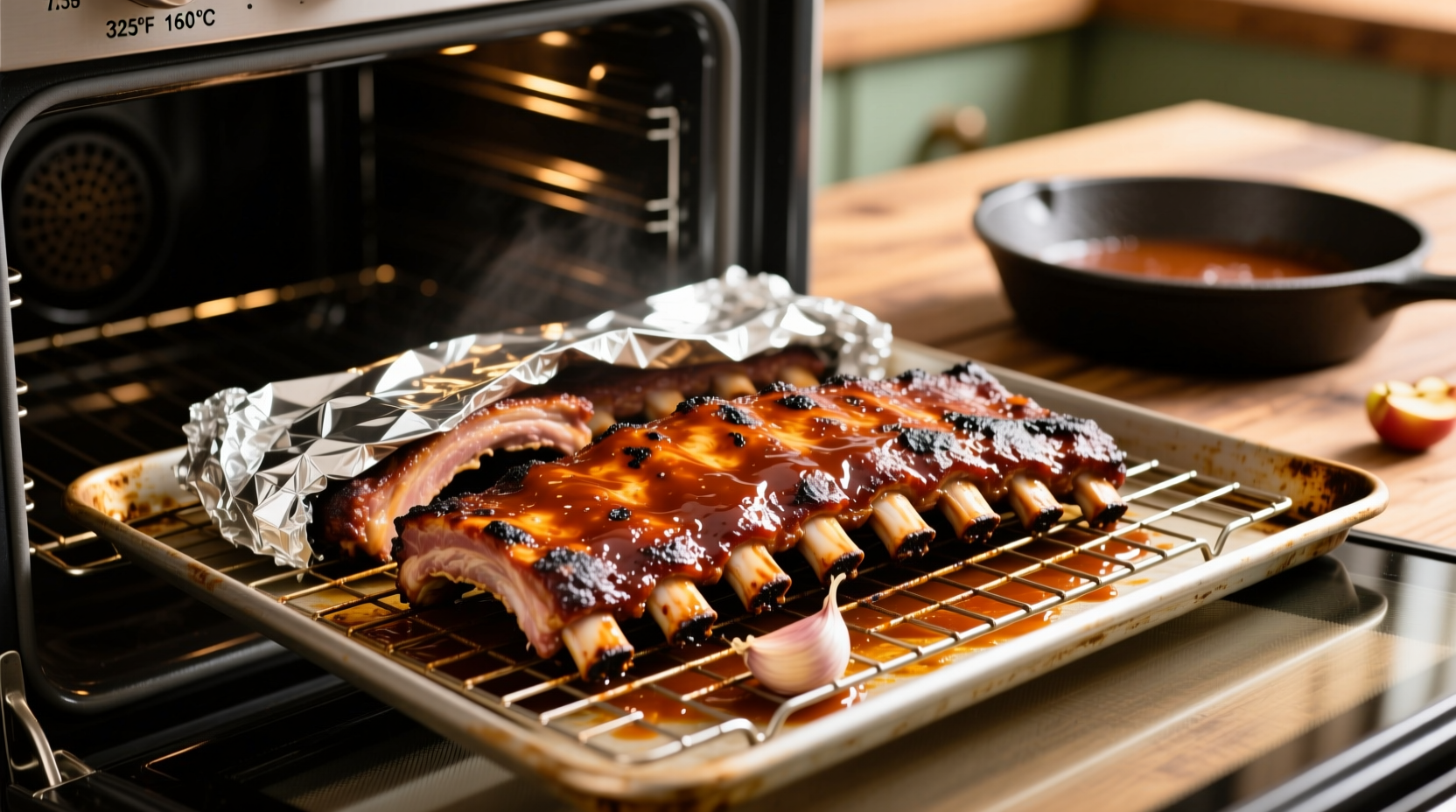Getting oven-baked spare ribs right separates casual cooks from true barbecue enthusiasts. While many focus solely on timing, the reality is more nuanced—temperature consistency, rib preparation, and doneness verification matter just as much as the clock. After decades of perfecting this technique, we've distilled the exact process that guarantees tender, juicy ribs every time.
Why Timing Alone Isn't Enough
Simply setting a timer risks either rubbery undercooked ribs or dry, stringy overcooked meat. The magic happens through collagen conversion—the tough connective tissue transforms into gelatin between 160-205°F (71-96°C). This scientific process requires both time and precise temperature control. As Antonio Rodriguez explains: "Ribs aren't done by the clock; they're done by texture. Your thermometer and eyes are better guides than any preset time."
| Oven Temperature | Approximate Time | Best For |
|---|---|---|
| 225°F (107°C) | 3.5-4 hours | Competitive BBQ texture |
| 250°F (121°C) | 3-3.5 hours | Traditional fall-off-the-bone |
| 275°F (135°C) | 2.5-3 hours | Weeknight cooking (recommended) |
| 300°F (149°C) | 2-2.5 hours | Quick preparation (less tender) |
The Complete Cooking Framework
Preparation Phase: Setting Up for Success
Before your timer starts, proper preparation determines your outcome:
- Silverskin removal: Peel the membrane from the bone side using a butter knife—this allows seasoning penetration and even cooking
- Dry brine: Apply 15 minutes before cooking for better crust formation
- Rack positioning: Place ribs bone-side down on a wire rack over a foil-lined baking sheet
Cooking Process: The Critical First 90 Minutes
During the initial cooking phase, avoid opening the oven. Temperature fluctuations extend cooking time significantly. For best results:
- Preheat oven 15 minutes before inserting ribs
- Place ribs in center rack position
- Use an oven thermometer (most ovens have 25°F+ variance)

Doneness Verification: Beyond the Timer
Timing provides only a starting point. Verify doneness using three methods:
- The bend test: Lift ribs with tongs at 45-degree angle—they should crack slightly but not break
- Internal temperature: Insert thermometer into thickest part (avoiding bone) aiming for 195-203°F (90-95°C)
- Meat retraction: Bones should protrude 1/4-1/2 inch from ends
According to USDA FoodSafety.gov guidelines, pork is safe at 145°F, but ribs require higher temperatures for texture. "The safety minimum differs from culinary doneness," notes food scientist Dr. Emily Chen. "For ribs, we're targeting connective tissue breakdown, not just pathogen elimination."
Troubleshooting Common Issues
Tough ribs after recommended time? Your oven may run cool—verify with independent thermometer. Increase temperature by 25°F and check every 20 minutes.
Burning before tenderizing? Wrap ribs tightly in foil with 1/4 cup apple juice after 90 minutes (the "Texas crutch" method).
Dry edges but undercooked center? Rotate baking sheet 180 degrees halfway through cooking for even heat distribution.
Finishing Techniques for Restaurant-Quality Results
For perfect ribs, allow 30 minutes of resting time before slicing. This lets juices redistribute throughout the meat. If using sauce:
- Apply during last 15-20 minutes of cooking
- Use thin layers—thick sauce burns easily
- Glaze under broiler for 2-3 minutes for caramelization
Remember that cooking continues during resting. Pull ribs 5°F below target temperature to prevent overcooking. For competitive barbecue results, wrap ribs in butcher paper at 165°F and finish cooking—this "butcher paper method" preserves more moisture than foil.
Advanced Timing Adjustments
Several factors require timing adjustments:
- Rib thickness: Add 15 minutes per additional 1/2 inch thickness
- Starting temperature: Cold ribs from fridge add 20-30 minutes
- Oven type: Convection ovens reduce time by 25%
- Rack quantity: Multiple racks increase time by 15-20%
For precise timing when cooking multiple racks, rotate positions halfway through and check each rack individually. The rack closest to the heating element will cook faster.











 浙公网安备
33010002000092号
浙公网安备
33010002000092号 浙B2-20120091-4
浙B2-20120091-4